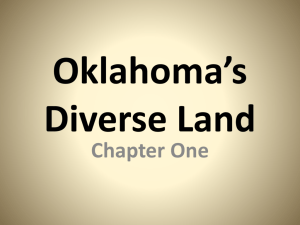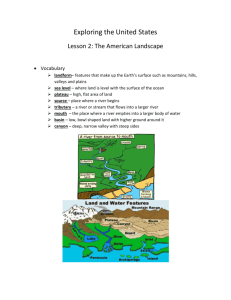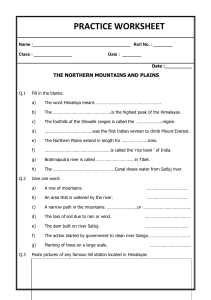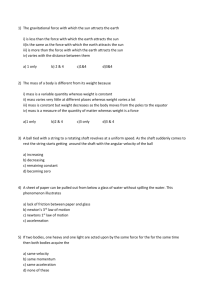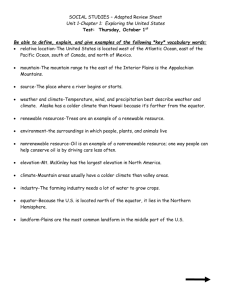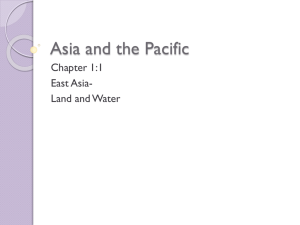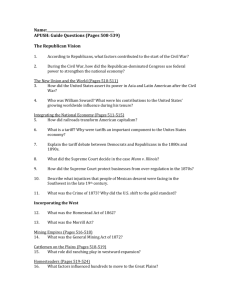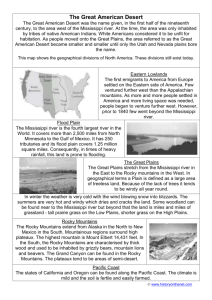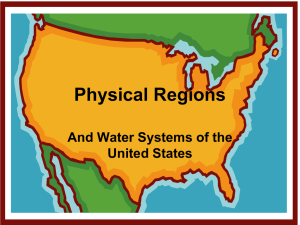Physical Map of the United States
advertisement
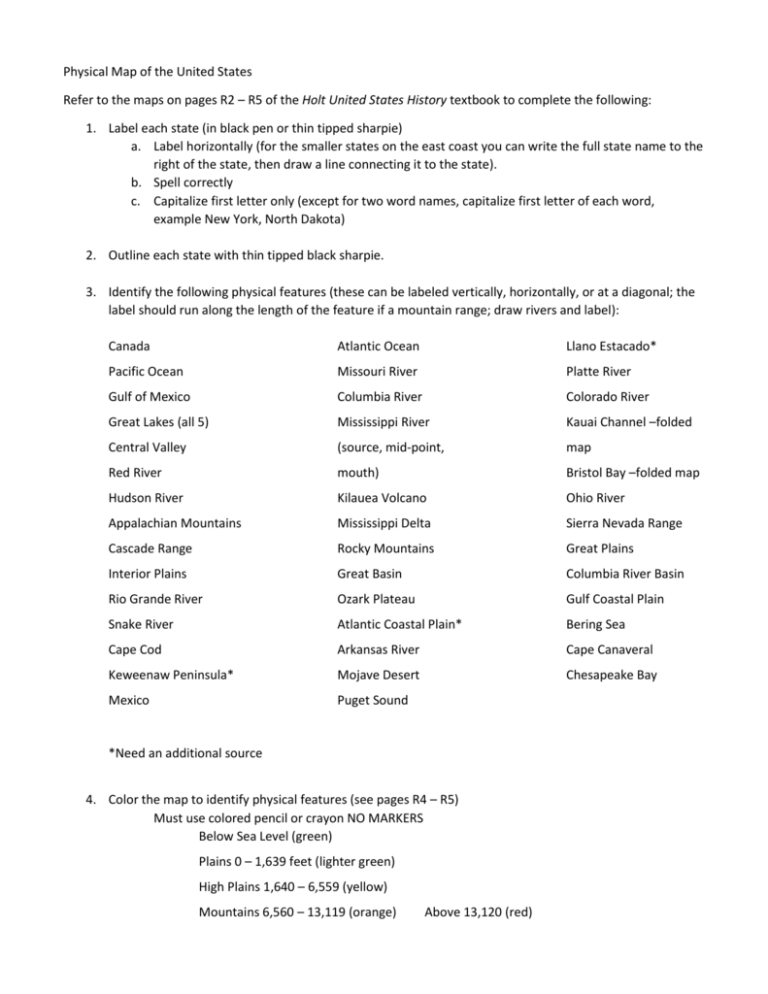
Physical Map of the United States Refer to the maps on pages R2 – R5 of the Holt United States History textbook to complete the following: 1. Label each state (in black pen or thin tipped sharpie) a. Label horizontally (for the smaller states on the east coast you can write the full state name to the right of the state, then draw a line connecting it to the state). b. Spell correctly c. Capitalize first letter only (except for two word names, capitalize first letter of each word, example New York, North Dakota) 2. Outline each state with thin tipped black sharpie. 3. Identify the following physical features (these can be labeled vertically, horizontally, or at a diagonal; the label should run along the length of the feature if a mountain range; draw rivers and label): Canada Atlantic Ocean Llano Estacado* Pacific Ocean Missouri River Platte River Gulf of Mexico Columbia River Colorado River Great Lakes (all 5) Mississippi River Kauai Channel –folded Central Valley (source, mid-point, map Red River mouth) Bristol Bay –folded map Hudson River Kilauea Volcano Ohio River Appalachian Mountains Mississippi Delta Sierra Nevada Range Cascade Range Rocky Mountains Great Plains Interior Plains Great Basin Columbia River Basin Rio Grande River Ozark Plateau Gulf Coastal Plain Snake River Atlantic Coastal Plain* Bering Sea Cape Cod Arkansas River Cape Canaveral Keweenaw Peninsula* Mojave Desert Chesapeake Bay Mexico Puget Sound *Need an additional source 4. Color the map to identify physical features (see pages R4 – R5) Must use colored pencil or crayon NO MARKERS Below Sea Level (green) Plains 0 – 1,639 feet (lighter green) High Plains 1,640 – 6,559 (yellow) Mountains 6,560 – 13,119 (orange) Above 13,120 (red)


